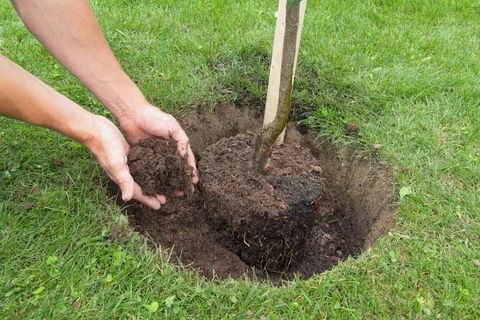Planting a Tree? Start Your Tree Off Right
Admin • July 25, 2018

Proper tree health begins at the time of planting. Homeowners who plant a tree on their property can start their tree off right by following proper procedure. Knowing where to plant your tree, how big to make the hole, how much water to give your tree, and other tips can help ensure that your new tree is healthy.
Choose the Right Location
Scout out the location for the tree before inserting it into the ground. When looking for the right location, you should take into account a variety of factors, including:
- How much light does the tree require, and will it get enough in that location?
- Will the tree interfere with other plants on the landscape?
- Will the tree's branches interfere with power lines when it grows to its full height?
- Will the tree's roots pose a danger to the sewer line, mainline, or other underground lines on the property?
Contact your local utility company to find out where the underground lines grow on your property. Research the expected size of your tree's root ball and canopy. Look around your yard at the plants that grow on your property, and ask yourself if the tree will throw these plants into shade.
Dig a Wide Hole
Many people believe that trees need a deep hole in order to thrive. For a long time, digging a deep hole was even the recommended professional practice.
We know now that trees do best when planted in holes that are only as deep as the root ball, and much wider than the nursery pot that contains the tree. A typical hole for a tree should be at least 2 times the width of the root ball, and can be as much as 5 times the width of the roots.
Wide holes are beneficial because tree roots grow more out than down, and loose soil around the tree will encourage strong, fast root growth.
Place the Tree
Gently pull the tree out of the nursery pot and place it in the hole. Depending on the size of the tree at the time of planting, this may be a two person job. Position the tree in the center of the hole, and then fill it with loose soil. You may need to crumble up the soil before putting it back in the hole if the soil is clumped together.
When you place the tree in the hole, remember to position the tree so that the most attractive side is facing the direction that you want it to face. Cover all of the roots so that none of them are exposed.
Mulch the Tree
Mulch helps shade the tree's roots and prevents moisture from evaporating from the soil. Place a thick layer of mulch around your tree's base, to cover the root ball and the loose soil. Do not allow the mulch to touch the trunk of the tree. Mulch that comes into contact with your tree's trunk can spread fungus and can cause disease in your tree.
Water Frequently
Trees need a lot of water in the weeks before becoming established. Water your tree deeply every day for the first few weeks, then cut back gradually. Your tree will need supplemental watering throughout the first two years, especially during times of intense heat or drought. Keep soil moist to a depth of about two inches until your tree has been in your yard for two years.
Get Help From a Professional
Planting a new tree can be a lot of work. If you want to be sure that your tree is planted properly, work with an arborist or a landscape professional to ensure that your tree is off to a good start.
At Horton Tree Service, we're always happy to answer questions about tree planting and other landscaping issues. Contact us today
with your questions.







